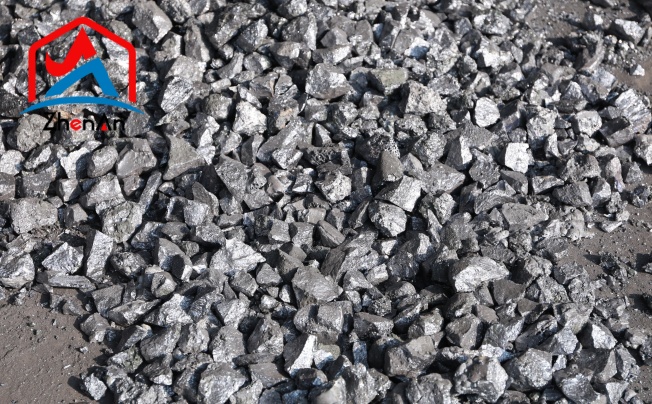Metals and nonmetals are two distinct categories of elements on the periodic table, distinguished by their physical and chemical properties. Metals are characterized by their lustrous appearance, malleability, ductility, and conductivity of heat and electricity. Common examples of metals include iron, copper, aluminium, and gold.
Nonmetals
Contrary to metals' brilliant luster, nonmetals present a stark contrast with their lackluster appearance, devoid of shine or reflective properties. Nonmetals do not exhibit the same level of reflectivity as metals due to differences in their electronic configurations, leading them to absorb rather than reflect light. This lackluster quality gives nonmetals a dull or matte finish that distinguishes them from their metallic counterparts.
Nonmetals are characterized by their brittleness – a tendency to break easily when subjected to force or stress. Unlike metals that can undergo plastic deformation without fracturing extensively, nonmetals lack the internal structure necessary for enduring mechanical strain. As a result, materials like sulfur and carbon in nonmetallic form are prone to shattering or crumbling under pressure due to weak intermolecular forces holding their atomic arrangements together.
Electrical Conductivity
The Conductive Nature of Metals
Metals are renowned for their exceptional ability to conduct electricity. This remarkable property stems from the presence of free electrons within the atomic structure of metals. In metallic bonding, outer electrons are delocalized, meaning they are not bound to a specific atom but can move freely throughout the material.
When a voltage is applied across a metal conductor, these mobile electrons respond by drifting in the direction of the electrical field. This movement of charge carriers facilitates the flow of electric current with minimal resistance, making metals prime candidates for electrical wiring and circuitry.
The Insulating Behavior of Nonmetals
In stark contrast to metals, nonmetals exhibit poor conductivity when it comes to electricity. This lackluster performance can be attributed to their atomic structure, which typically lacks free electrons available for efficient conduction. In covalent bonding prevalent among nonmetals, electrons are shared between atoms rather than being transferred outright as in ionic bonds.
As a result, nonmetals do not have the luxury of mobile charge carriers required for effective electrical conduction. Instead, they tend to hold onto their electrons tightly, restricting the flow of electricity through their molecular networks.
Semiconductors
While metals and nonmetals represent two extremes in terms of electrical conductivity, there exists a fascinating middle ground known as semiconductors. These materials possess properties that allow them to conduct electricity under certain conditions but insulate under others.
By carefully manipulating impurities or introducing external influences such as temperature or light, semiconductors can switch between conducting and insulating states at will – a characteristic exploited in electronic devices like transistors and diodes.
Metals
One of the defining characteristics of metals is their reactivity with various substances, particularly acids. When metals come into contact with acids, a chemical reaction occurs in which the metal atoms lose electrons to the acid, producing hydrogen gas as a byproduct. This process is commonly observed in reactions such as the classic example of dropping a piece of zinc into hydrochloric acid to produce zinc chloride and hydrogen gas.
The reactivity of metals with acids is a crucial property that finds applications in various industrial processes and laboratory experiments.
Additionally, corrosion is another important aspect of the chemical properties of metals. Some metals are prone to corrosion when exposed to air or moisture over time. This corrosion process involves the formation of oxides or hydroxides on the surface of the metal, leading to degradation and weakening of its structure. For instance, iron reacts with oxygen in the presence of water to form iron oxide, commonly known as rust. Corrosion can have detrimental effects on metal objects, causing them to deteriorate and lose their functionality if not properly protected or maintained.
Nonmetals
In contrast to metals, nonmetals exhibit different patterns of reactivity in chemical reactions. Nonmetals tend to gain electrons rather than lose them when reacting with other elements, especially metals. This electron gain results in the formation of compounds such as oxides or halides where nonmetals act as electron acceptors. For example, when chlorine gas reacts with sodium metal, chlorine gains an electron from sodium to form sodium chloride (table salt).
This tendency for nonmetals to form compounds by gaining electrons plays a crucial role in balancing chemical equations and understanding molecular interactions. The reactivity pattern exhibited by nonmetals emphasizes their distinct behavior compared to metals when engaging in chemical reactions. While metals showcase a propensity for losing electrons and forming cations, nonmetals showcase an affinity for gaining electrons and forming anions during bond-formation processes.
Usage and Applications
Metallic Marvels: Strength and Conductivity
Metals, with their exceptional strength and conductivity properties, play a vital role in various industries. In the field of construction, metals like steel are the backbone of skyscrapers, bridges, and other structures due to their durability and load-bearing capabilities. The manufacturing industry relies heavily on metals for machinery, tools, and equipment that can withstand rigorous use.
Electrical wiring harnesses the conductivity of metals such as copper to efficiently transmit electricity over long distances with minimal loss. Additionally, in the transportation sector, metals like aluminium are preferred for their lightweight yet sturdy nature in crafting aircraft frames and automotive bodies.
Nonmetals' Niche: Insulation and Semiconductors
While not as pervasive as metals in everyday applications, nonmetals have distinct purposes that are equally essential. One crucial role nonmetals play is in insulation materials used for electrical wiring to prevent short circuits and ensure safety. Substances like rubber (carbon-based) serve as excellent insulators due to their high resistance to electric current flow.
Moreover, nonmetals find significant applications in semiconductor technology. Silicon, a widely used semiconductor material derived from sand (a nonmetal), forms the basis of electronic devices like transistors and microchips that power our modern world's technological advancements.






